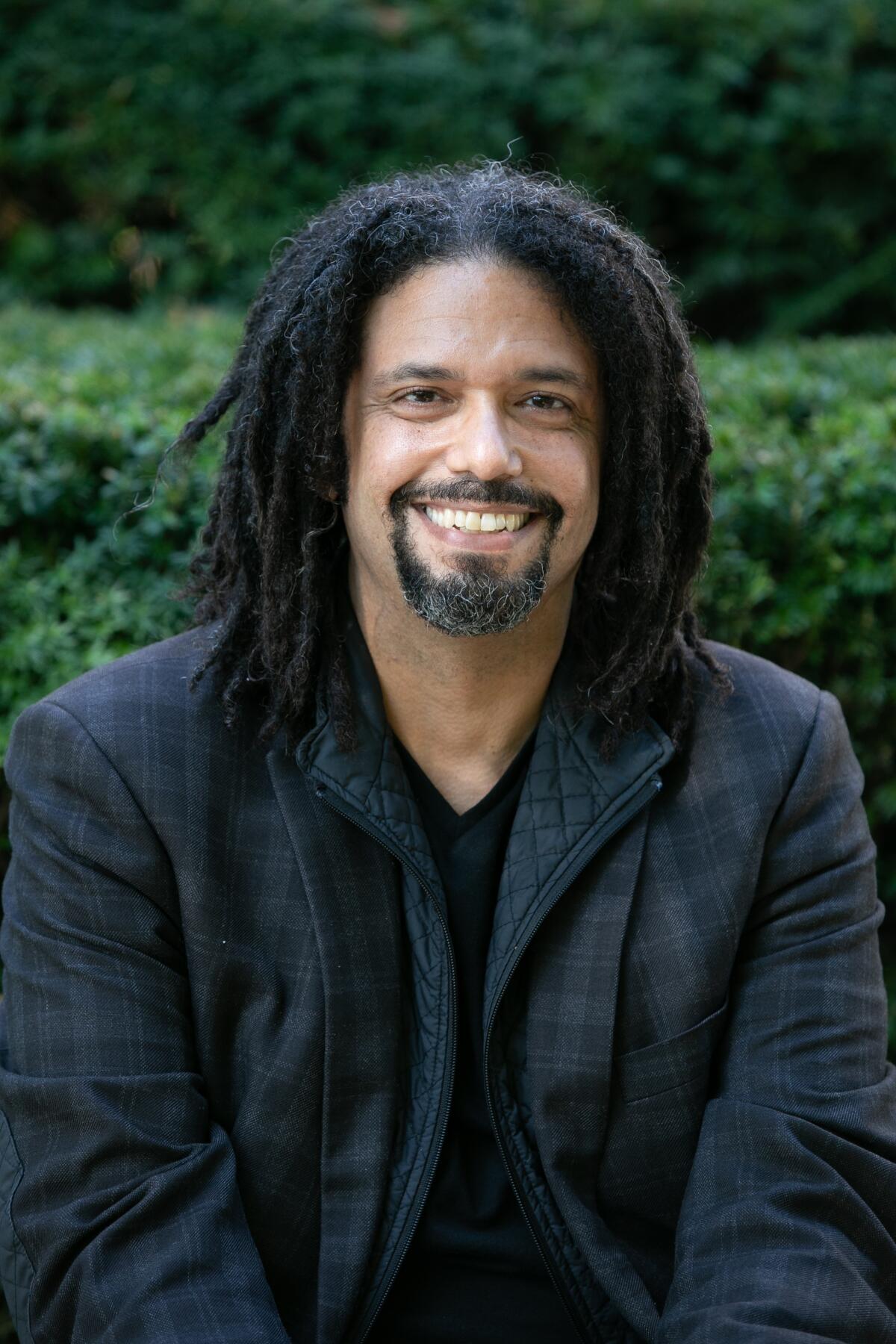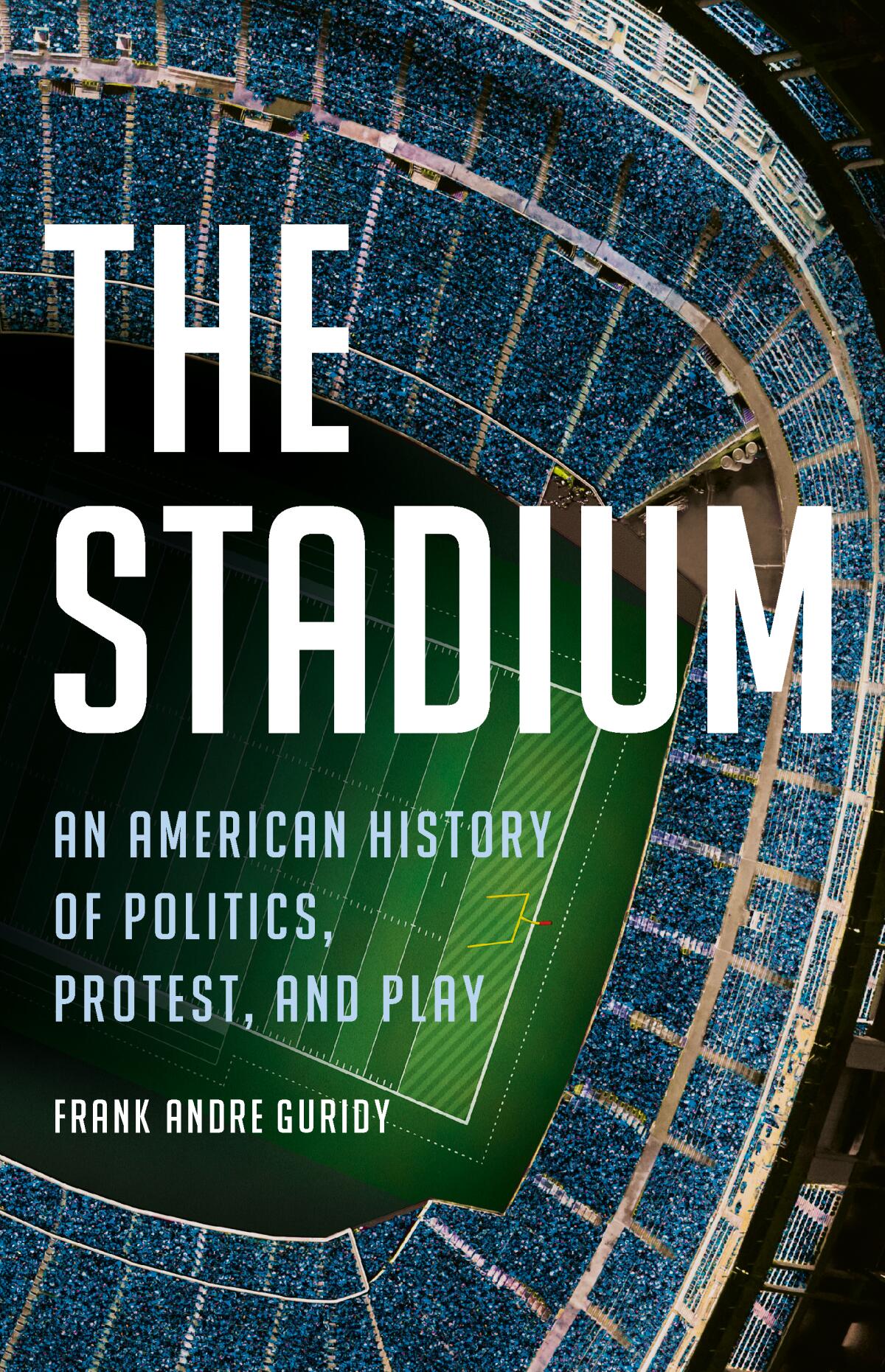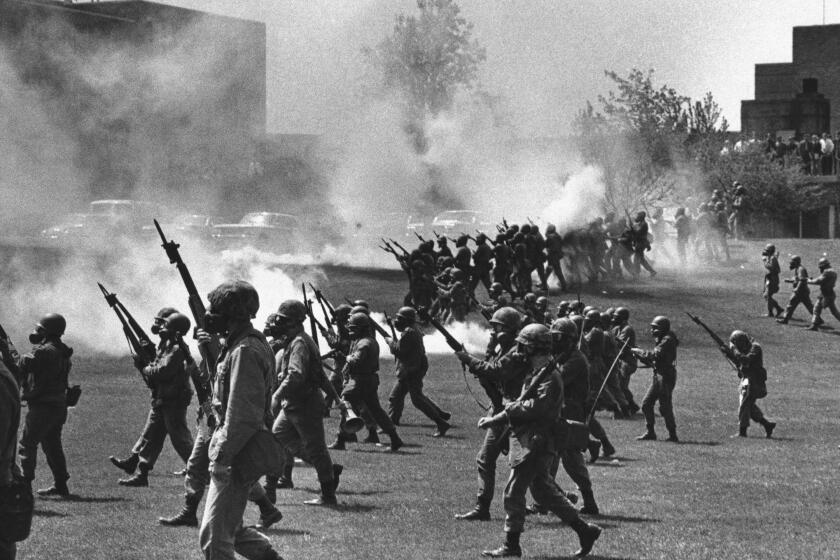Stadiums are more than a symbol. They are built to exclude some people and include others

- Share via
Book Review
The Stadium: An American History of Politics, Protest, and Play
By Frank Andre Guridy
Basic Books: 368 pages, $32
If you buy books linked on our site, The Times may earn a commission from Bookshop.org, whose fees support independent bookstores.
We generally enter stadiums to watch football or baseball, or see a huge concert, or perhaps cheer on a favorite political candidate. Chances are such activities don’t lead directly to serious consideration of how and for whom public spaces are used, or how these spaces reflect the strengths and weaknesses of American democracy. But after reading Frank Andre Guridy’s “The Stadium,” you might just find yourself thinking as much about the history of these cavernous facilities as the games on the field.
Subtitled “An American History of Politics, Protest, and Play,” Guridy’s deeply researched book delivers just that. This is a progressive-minded study of inclusion and exclusion, the relationship of highly visible buildings to their neighborhoods, and the ways in which stadiums and arenas have succeeded and ways they’ve failed to live up to the country’s ideals.

It is also a defense of the midcentury “concrete donut” stadium — think Cincinnati’s Riverfront Stadium, or San Francisco’s Candlestick Park — which, Guridy argues, fostered a democratic spirit despite their usual location on the city’s outskirts. Conversely, it offers a critique of the quaint “jewel box” facilities (pioneered by Baltimore’s Camden Yards) that tend to cater to wealth and gentrification despite their centralized urban locations.
Historian Brian VanDeMark seeks the truth behind the May 4, 1970, campus massacre, as experienced by students, National Guard, officials and the families of those who died.
Guridy, a professor of history and African American studies at Columbia University, has set himself a daunting task with many potential pitfalls. Such a book could lean too hard into a study of buildings, which would appeal to readers of an architectural bent but perhaps not a general audience. It also could turn the endeavor into a work of sports history; games, after all, are what most people think of when they hear the word “stadium.” The book contains elements of both subjects, but Guridy is after something bigger than either.
“The Stadium” is a work of social history, about the interaction of people, places and ideas, segregation both legal and de facto, mingling and isolation, money and power. This is a series of vivid scenes that add up to a big picture.
One of those scenes unfolds in the heart of Los Angeles. The publicly managed Los Angeles Memorial Coliseum opened in 1923 (one of many stadiums designed as memorials to World War I veterans), built to draw the Olympics to Los Angeles (which it did, in 1932). By the 1970s it had long been racially integrated, as opposed to, say, Tulane stadium in New Orleans, where for many years visiting football teams had to bench their Black players. (In 1956, as Guridy writes of Louisiana, “the state legislature banned interracial mixing at sporting events and at virtually all social functions.”)
But at the Coliseum, progress wasn’t measured merely on the playing field. In 1972, seven years after the Watts uprising, the facility hosted the first Wattstax concert, a benefit showcase of Stax recording artists featuring Isaac Hayes, the Staple Singers and many other acts. As Guridy writes, “The audience of a hundred thousand was the largest crowd of black people at a public event in the United States since the March on Washington in 1963.” At this moment, the stadium was the site of social change and cultural celebration.
Other subjects explored here include the 1982 Gay Games held at Kezar Stadium in San Francisco (the U.S. Olympic Committee played legal hardball to make sure Gay Games organizers couldn’t officially use the word “Olympics”); the history of Robert F. Kennedy Memorial Stadium in Washington, D.C, essentially a national monument where demeaning stereotypes of Native Americans were regularly acted out as entertainment for Redskins fans; and the battle to allow female journalists into stadium locker rooms and press boxes, led largely by Melissa Ludtke, who in 1978 was a plaintiff in the federal lawsuit that eventually won female sports reporters equal access to Major League Baseball locker rooms. (Ludtke has written a fine new book, “Locker Room Talk,” that chronicles this struggle in detail.)
At its heart, “The Stadium” is a story of access and representation in the most public and crowded of places, where rituals of community and, often, patriotism are played out for all to see. Like many sports fans, Guridy casts a critical eye on the premium now placed on luxury seating, which prices many fans out of the picture, and the preponderance of garish corporate sponsorship, which now makes stadiums look like billboard markets where a game happens to be unfolding.
Guridy occasionally loses the forest for the trees as he zooms in on an episode that demonstrates a particular point he wants to make. But when he takes a detour into a specific event, prompting you to wonder where we might be going, he usually manages to loop back to the main road.
“The Stadium” maintains a grasp on the stadium as an idea, and an ideal. In this book the stadium is us, writ large, for better or worse. It is where we live out our national dreams and, sometimes, our fantasies.
Chris Vognar is a freelance culture writer.
More to Read
A cure for the common opinion
Get thought-provoking perspectives with our weekly newsletter.
You may occasionally receive promotional content from the Los Angeles Times.







